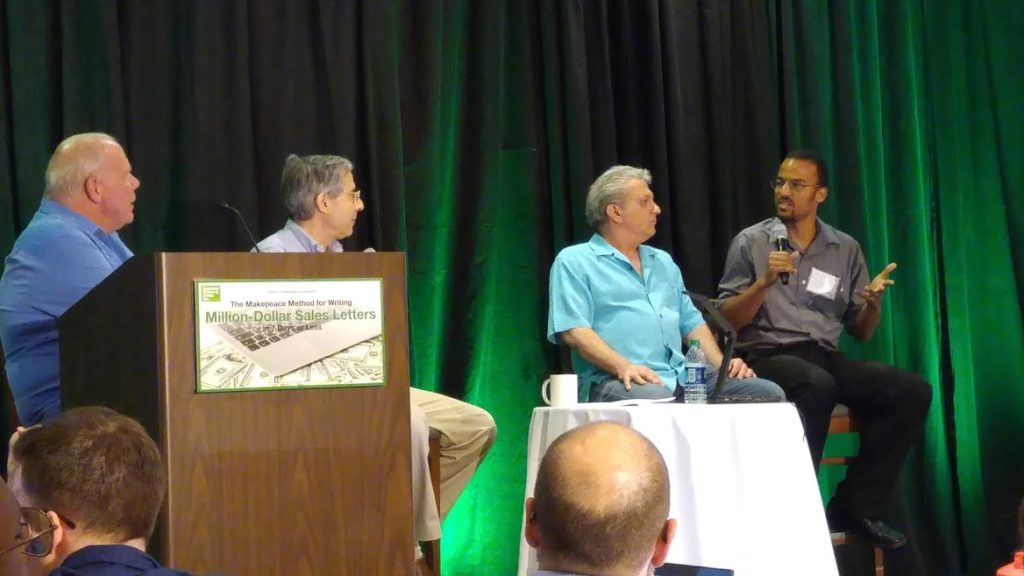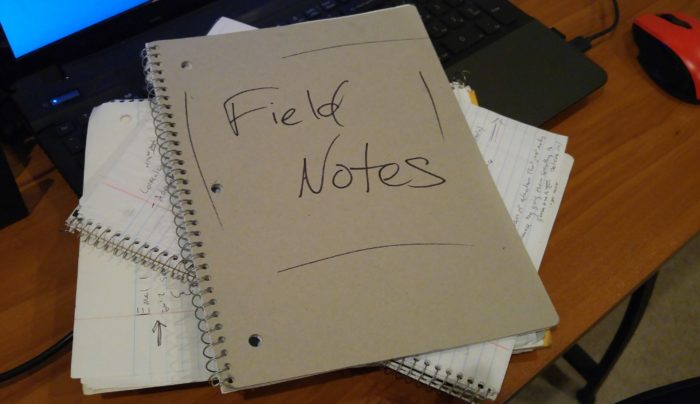Many of the biggest names in the copywriting world gathered yesterday to pay tribute to Clayton Makepeace, who passed away almost exactly one year ago.
His death hit me pretty hard because he was such an instrumental part of my journey.
Not only was Clayton a great copywriter (one of the all-time greats) and brilliant teacher (his copy cubs are some of the best in the game, too)…
He was one of the most interesting guys I’ve ever hung out with.
Since I wasn’t invited to speak at today’s tribute, which was organized and hosted by another legend, Carline Anglade-Cole…
I’m going to share a game-changing lesson he taught me right here.
Now, to be fair, I wasn’t invited to speak at the tribute because:
1) I’m barely a big name copywriter in my own house and
2) Clayton was only my mentor from a distance.
Plus, I only hung out with him once, when I was invited to speak on a hot seat panel during AWAI’s “Makepeace Method for Writing Million Dollar Sales Letters in 7 Days or Less” workshop in 2016.
Here’s a picture of Clayton and me on stage at the event, along with David Deutsch and Parris Lampropoulos (who both spoke at the tribute).

By the way, I’d like to publicly thank John Forde for helping get me on stage with these titans.
Now, let me share the lesson Clayton taught me that impacted me more than any other.
No matter how you rate your copywriting skills, this concept can revolutionize your ability to persuade in print or in person.
It’s…
“The Triumph of Hope Over Experience“
Your should-be clients have dreams and desires. In many cases, those dreams and desires do not match up with the reality they’re face every day.
They dream of having six-pack abs… even though they see their gut bulging more every week.
And they want to get that six-pack without exercise or dieting. A magical fat-burning pill will do nicely.
They dream of their husbands putting their socks in the hamper instead of leaving them on the bathroom floor… even though their experience tells them not to hold their breath. (Pun intended)
Experience tells them their dreams and desires are out of reach.
But they still have HOPE and their hope consistently triumphs over their experience.
Hope is what drives them to keep trying – and buying – new things to get closer to those dreams and desires.
Your job as a persuader is to pour gasoline on the embers of their hope. Do it right and your prospects will appreciate you selling to them.
And here’s a brilliant tip:
His experience can be the path of least resistance to the promised land he hopes to reach.
Show him an experience he’s already personally familiar with.
Then connect that experience to a fact he knows (or at least suspects) and could easily prove.
And then connect that fact to the dream/desire you’re appealing to in your copy.
Take this oversimplified example:
Copy: 90% of people live paycheck to paycheck.
Reader: “Yep, I’m broke and so is everyone I know.”
Copy: The 10% of people doing well have totally different mindsets and habits than the broke folk. But no one ever told you.
Reader: “That makes sense! My role models were broke, so they couldn’t show me the right way. So it’s not my fault”
Copy: Once you learn just a few mindset hacks and simple habit stacks, you’ll be ready to join the rich and famous 10%.
Reader: “Take my money!”
See how that works?
You’re building belief in the new transformation you’re selling on the foundation of one (or more) of his established beliefs.
And get this.
Even if the reader has tried a similar product… the fact that he’s reading your copy means he HOPES you’re going to be the one who finally helps him realize his dreams and desires.
A lot of copywriters skip this step. They go right from “You’re broke” to “here are mindset hacks and habit stacks to help you get rich.”
Again, that’s oversimplified, but you can see how powerful the concept is.
We could go deeper, but we’ve covered enough ground for one article.
Add this lesson from Clayton to your persuasion repertoire. It can make a world of difference for you (and your should-be clients).


